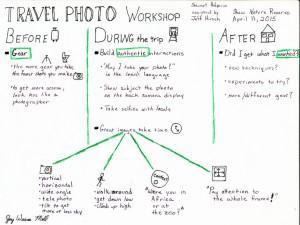
Click for a larger, more readable, image
It’s been a while since I posted anything for Saturday Snapshot, hosted at West Metro Mommy Reads, but I thought that crowd would like to know what I learned at a photography workshop last weekend.
I put the bulk of my thoughts on a sketch note. I’m currently taking an on line course called The Verbal to Visual Classroom. I’ve got a lot to learn, but you can see that I’ve improved since the last time I posted a sketch note, a summary of The End of Overeating by David A. Kessler.
I’ll also post some of photos from my last trip, to England, and what I learned from the travel photo workshop that will help me take more good photos on the next trip.
Color. The instructor, Stewart Halperin, liked this photo for the color. As he said, “Our job is to find color in the world — not in the computer.” In other words, the saturation adjustment is not the photographer’s best friend.
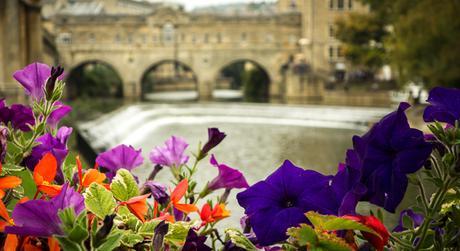
Pultney Bridge in Bath, England, from the Parade Gardens
Movement. We tend to take static subjects because they’re easier, but motion can make great photos. One of my fellow students in the workshop had a stunning photo of laundry on a line, blowing in a high wind across the plains. She used a fast shutter speed to freeze the movement at a dramatic moment. The other way to capture motion is to let what is moving blur. For this photo of a chain maker, I braced myself against a handy column and took lots of pictures so that I could choose one where the still parts are sharp and only the moving hand and tool are blurred.
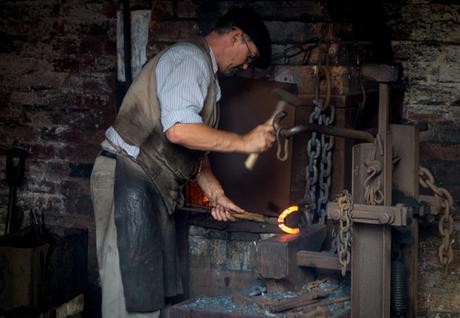
Chain maker, working on a link. Black Country Living Museum.
Story. “Tell a story that was never meant to be told.” ~Stewart Halperin

One of the four bronze panels at the base of Nelson’s Column, with a young couple
Beyond. I had a question when I went to the workshop that I didn’t have to ask because it came up while we were looking at the various photos that the students took. Most obviously, the issue arose when we confronted a photo of a mural. Is the artistry in the artwork? Or in the photo of the artwork? To make it more truly the photographer’s own, the trick is to wait until a soccer ball rolls by. Or, do what this photographer did and move in closer to turn a detail of the mural into a piece of abstract art.
This photo of the London Eye is powerful, but it borrows most of its power from the London Eye itself.
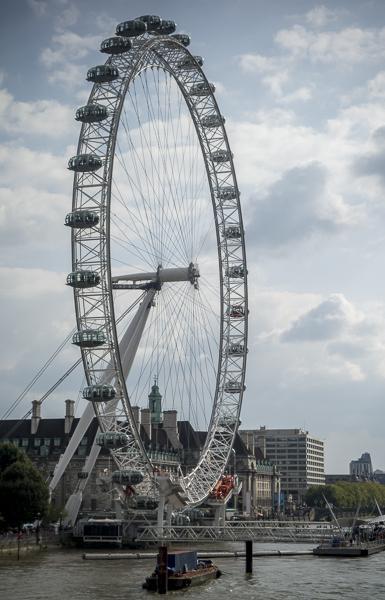
The London Eye dominates the landscape here.
This photo, also featuring the London Eye, expresses something about me and the way I see the world — with framing, layers, and light. Also, a waving flag (I like waving flags).
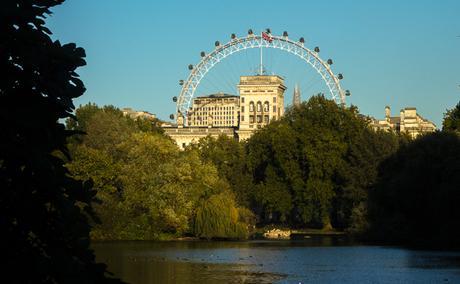
The London Eye and the Foreign and Commonwealth Office from St. James’s Park.
That helped me understand why I didn’t love my photo of the Big Ben tower. I like it because it looks like a postcard. I don’t love it because it looks like a postcard. All the beauty is in the light on the tower and I’m not the first to capture that. As Stewart said, “Go beyond the innate beauty.”
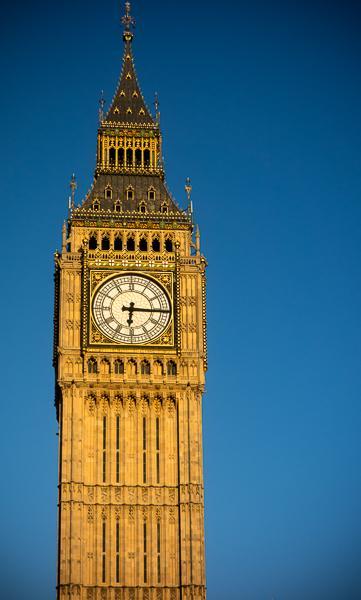
The Palace of Westminster tower where Big Ben, the bell, is housed.
More tips. Here are a few other tips that I took from the workshop that I don’t want to forget to use myself:
- “Shoot every day for two weeks before a trip because seeing is like a muscle.” ~Jeff Hirsch
- Talk, in detail about numbers — ISO, aperture, shutter speed — so they get planted in the brain.
- “Don’t look at the back of your camera once you know it’s working.” ~Stewart Halperin
Are any of these ideas or tips on target for what you want to know about travel photography? What else have you learned about travel photography that might help me and other Saturday Snapshot participants take better photos on our next trips?
